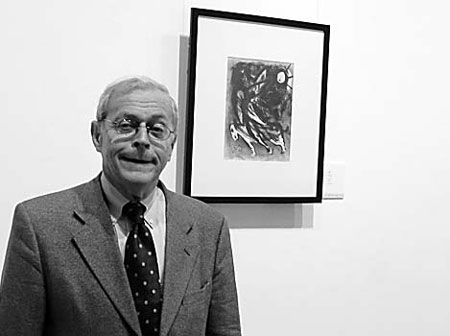US professor knows art of giving
Updated: 2012-02-27 13:31
(China Daily)
|
|||||||||
 |
|
Stone's motivation for collecting is an appreciation for beautiful things. Provided to China Daily |
Donald Stone's love for collecting art goes back to his childhood, when he started acquiring cheap postcard reproductions of paintings as a 10-year-old.
When he was 17, Stone bought a Rembrandt etching before he began collecting paintings. "I could not afford to buy master paintings, but I could occasionally afford prints and drawings by some of the same artists that I loved," he says.
Now 70, Stone says he continues to collect "minor works by major artists and major works by minor artists". His collections are confined to three areas, the Old Master (Western) drawings, the Master prints and Chinese art, including antiquities and paintings.
But unlike many art collectors, including a growing number of wealthy Chinese see their collections as financial investments, Stone donates his precious possessions "to share with other people".
Stone, who is a senior professor in the English department of Peking University, has already donated five sets of artworks including 200 etchings, lithographs and woodcuts of Western Master prints and some Chinese antiquities to the Arthur M. Sackler Museum of Art and Archaeology at the university.
"I think it's a mistake to think of art as an investment, although many people do in China and the West," Stone says. "By now, all the major Western masterpieces are owned by museums, so whatever comes up for sale is rarely of top quality.
"I love to look at beautiful things, whether a drawing by Antoine Watteau, a Han pottery dancer, or an etching by Picasso," he says. "By donating these pieces, I have the additional pleasure of sharing them with other people."
Stone currently lives in New York. He has been a visiting professor at Harvard and first came to China from the US to teach at Capital Normal University in 1982.
For the past six years at Peking University, he has taught British novels, English Victorian poetry and Western humanistic tradition.
"I think of my life in terms of 'BC' (Before China) and 'AC' (After China)," he says. "Never had I met so many brilliant students, so many wonderful colleagues, so many kind-hearted people."
Many of Stone's colleagues and students call him "Grandpa Stone".
"When he negotiates with dealers," writes undergraduate Hong Huimin to her friends on social networking websites, "Grandpa Stone will say the 'Sackler Museum needs this (artwork) very much'."
The university's Sackler Museum opened in 1993 and is named after Arthur M. Sackler, a prominent US pharmacologist, philanthropist and collector of art treasures who also lends his name to the renowned Arthur M. Sackler Museum, part of the Harvard Art Museums.
The collections at Beijing's Sackler Museum include a set of stone prints that depict the first staging of Shakespeare in Paris. Only two museums in the world are said to have complete sets.
"In America, most great universities have permanent art collections - gifts of the college alumni," he says. "Moreover, Yale, Princeton, Harvard all have excellent collections of Chinese art. So why shouldn't Peking University have a decent collection of Western art?"
Zhao Chaohong, curator of Beijing's Sackler, says the museum has many collections of ancient cultural relics, but still lacks modern art. Stone's donations help enrich this section, he says.
An exhibition of paintings Stone has donated to the museum gallery, including works by Bruegel, Rembrandt and Chagall, ends on Mar 3.
His personal favorites include a painting by artist Liu Yongming (a student of famous painter Wu Guanzhong) of Two Magpies, and two watercolors painted by William Alexander, the British artist who accompanied statesman George Macartney on his mission to China in 1793.
"These (watercolors are) exceedingly rare works, painted in China and subsequently engraved in England," Stone says, "and are of enormous importance as records of how China looked to Western eyes in the 18th century."